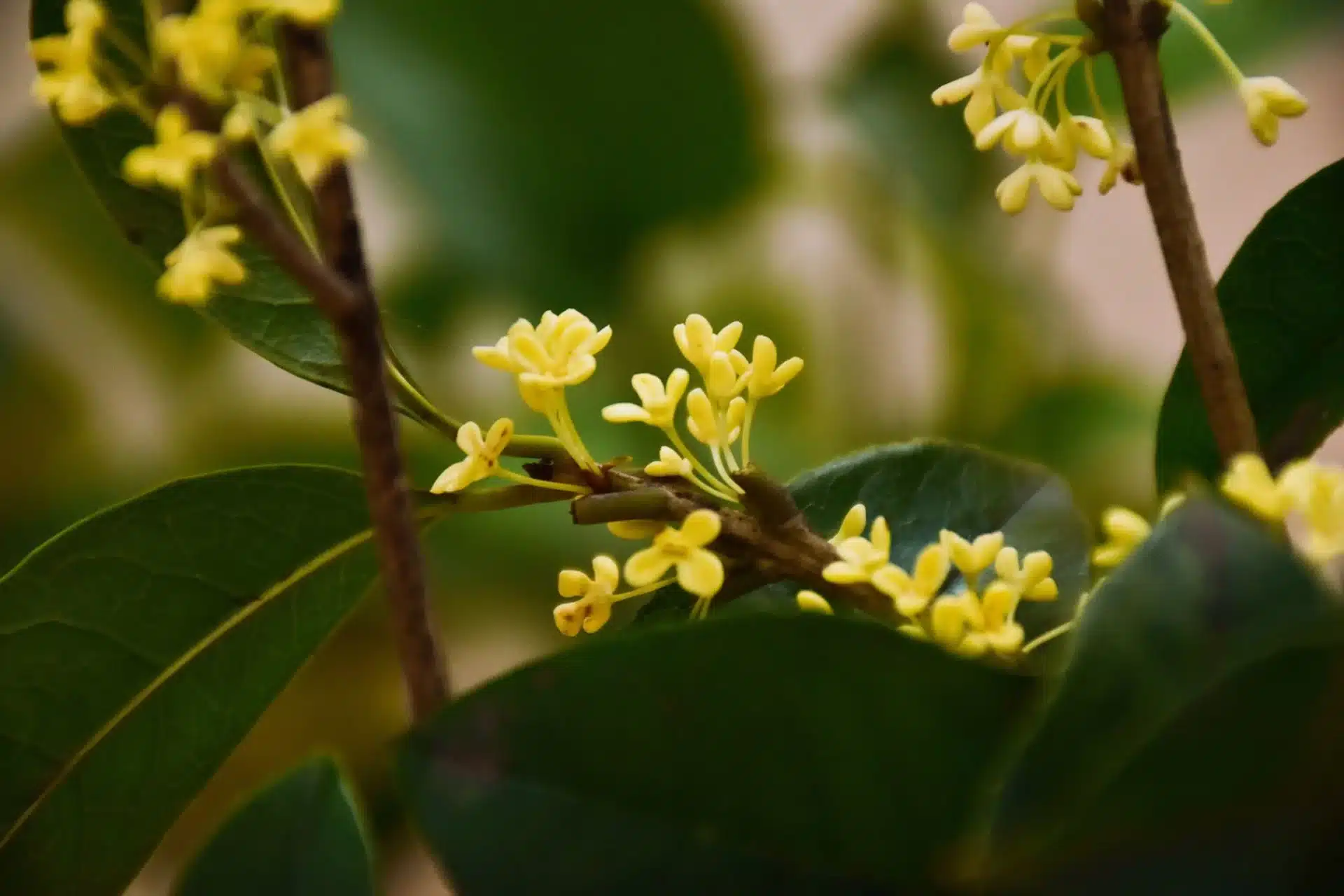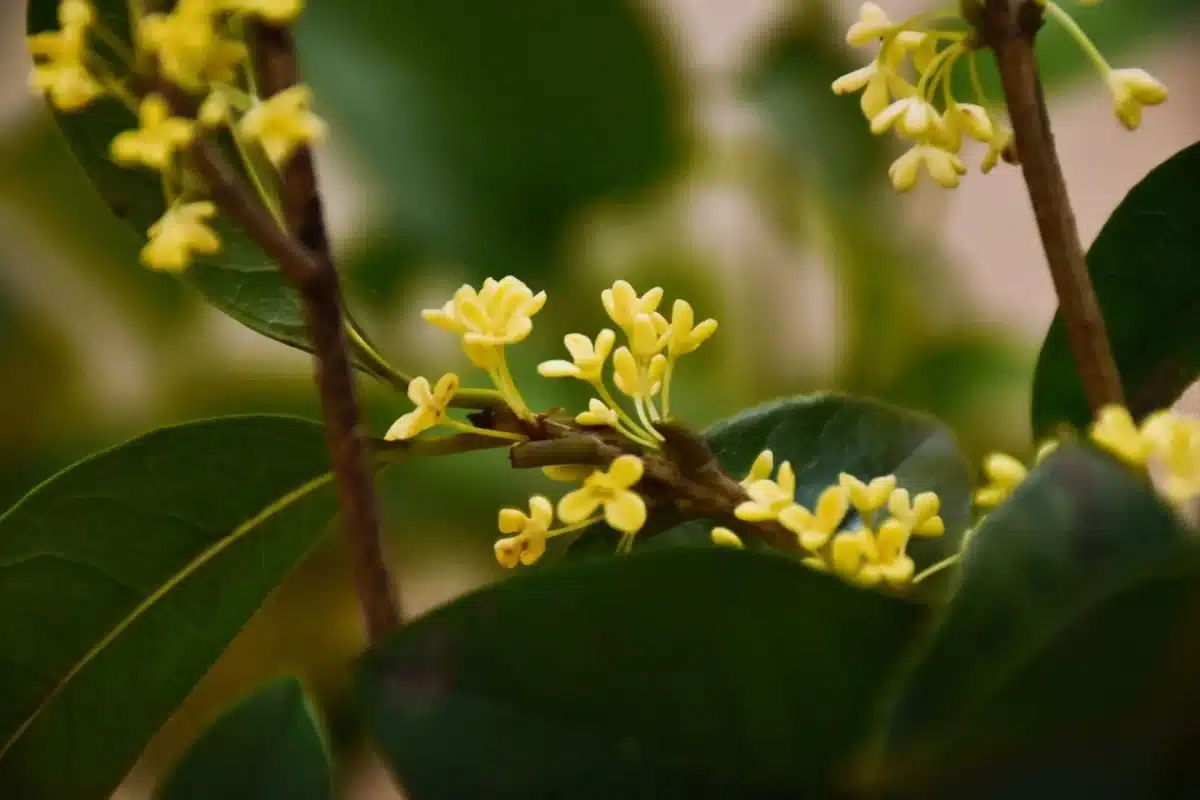Osmanthus Flowers in Teas and Desserts: A Journey of Floral Delight
Osmanthus flowers, cherished for their delicate aroma and subtle sweetness, have enchanted tea and dessert enthusiasts for centuries. Originating from East Asia, particularly China and Japan, osmanthus flowers infuse beverages and sweets with a floral elegance that tantalizes the senses and transports the palate to a realm of floral bliss. Let us embark on a journey to explore the enchanting world of osmanthus flowers in teas and desserts, celebrating their cultural significance and culinary versatility.
Cultural Significance:
In Chinese and Japanese cultures, osmanthus flowers hold profound significance, symbolizing prosperity, happiness, and harmony. These fragrant blossoms are celebrated in traditional festivals and ceremonies, where they evoke a sense of tranquility and beauty. During the Mid-Autumn Festival in China, osmanthus flowers are a central motif, adorning mooncakes and teas as symbols of reunion and abundance. In Japan, osmanthus flowers are revered for their graceful beauty and are often featured in art, literature, and tea ceremonies, where they inspire moments of contemplation and serenity.
Osmanthus Tea:
Osmanthus tea, with its delicate fragrance and soothing flavor, is a beloved beverage enjoyed for its aromatic complexity and subtle sweetness. To prepare osmanthus tea, dried osmanthus flowers are steeped in hot water, allowing their essence to infuse the liquid with a floral aroma and flavor. The resulting infusion offers a refreshing and invigorating drink that is perfect for any occasion. Osmanthus tea can be enjoyed hot or cold, depending on personal preference, and is often served with traditional Chinese pastries or desserts for a complete sensory experience.
Desserts Infused with Osmanthus:
Osmanthus flowers lend their enchanting aroma and subtle sweetness to a variety of desserts, elevating these sweet treats to new heights of culinary artistry. From delicate pastries to creamy puddings, osmanthus-infused desserts captivate the palate with their floral elegance and luscious flavors. Osmanthus jelly, a popular dessert in Chinese cuisine, features translucent jelly cubes infused with osmanthus syrup, creating a delightful texture and aroma. Osmanthus cake, another beloved delicacy, showcases the delicate flavor of osmanthus flowers in a moist and tender cake, adorned with fragrant petals for a visually stunning presentation.
Osmanthus Rice Wine:
Osmanthus rice wine, also known as osmanthus-infused wine or “gui hua jiu” in Chinese, is a traditional beverage enjoyed for its aromatic complexity and smooth finish. To make osmanthus rice wine, dried osmanthus flowers are infused into rice wine or sake, allowing their essence to permeate the liquid with a delicate floral fragrance. The resulting wine boasts a subtle sweetness and floral notes, making it a favorite choice for celebrations and special occasions. Osmanthus rice wine is often served chilled as a refreshing aperitif or paired with savory dishes to complement the meal.
Osmanthus-Flavored Pastries:
Osmanthus flowers add a touch of elegance to a variety of pastries and baked goods, infusing these delectable treats with their delicate aroma and subtle sweetness. Osmanthus-flavored mooncakes, a traditional Chinese pastry enjoyed during the Mid-Autumn Festival, feature a rich and buttery crust filled with sweet bean paste and osmanthus-flavored lotus seed paste, creating a harmonious blend of flavors and textures. Osmanthus cookies, made with buttery shortbread dough and infused with osmanthus syrup, offer a delicate sweetness and floral aroma that delights the senses with every bite.
Health Benefits:
In addition to their exquisite flavor and aroma, osmanthus flowers offer various health benefits, making them a popular choice for herbal remedies and culinary applications. Osmanthus flowers are rich in antioxidants and are believed to have anti-inflammatory properties, helping to boost the immune system and reduce the risk of chronic diseases. The calming and soothing effects of osmanthus tea are also well-documented, making it a popular choice for relaxation and stress relief. With its myriad of health benefits and delightful flavor, osmanthus tea and desserts offer a holistic approach to wellness that nourishes the body, mind, and spirit.
In conclusion, osmanthus flowers hold a special place in the world of teas and desserts, where their delicate aroma and subtle sweetness enchant the senses and transport the palate to a realm of floral delight. From aromatic teas to luscious desserts, osmanthus flowers infuse culinary creations with their unique charm and cultural significance, inviting us on a sensory journey that celebrates the beauty of nature and the artistry of gastronomy. Whether enjoyed as a soothing beverage or a decadent treat, osmanthus tea and desserts embody the timeless allure of floral elegance, leaving a lasting impression on all who indulge in their floral bliss.
FAQ:
1. How do I use osmanthus flowers in teas?
- Osmanthus flowers can be steeped in hot water to create osmanthus tea, a soothing beverage with a delicate floral aroma and subtle sweetness. Simply add dried osmanthus flowers to hot water and allow them to infuse for a few minutes before straining and enjoying.
2. Are osmanthus flowers edible in desserts?
- Yes, osmanthus flowers are edible and commonly used to flavor desserts such as osmanthus jelly, osmanthus cake, and osmanthus rice wine. They impart a delightful floral aroma and subtle sweetness to sweet treats.
3. Where can I buy osmanthus flowers for culinary use?
- Osmanthus flowers can be found in specialty Asian grocery stores, herbal shops, and online retailers that offer dried herbs and botanicals for culinary purposes.
4. Can osmanthus tea be served cold?
- Yes, osmanthus tea can be enjoyed both hot and cold. Simply allow the brewed tea to cool down and then refrigerate it until chilled. Add ice cubes if desired and garnish with fresh osmanthus flowers for a refreshing beverage.
5. What desserts pair well with osmanthus tea?
- Osmanthus tea pairs well with a variety of desserts, including light pastries, fruit tarts, and creamy puddings. The delicate floral aroma of osmanthus tea complements the sweetness of desserts without overpowering the flavors.
6. Are there any health benefits associated with osmanthus tea?
- Osmanthus tea is believed to have various health benefits, including antioxidant properties that help boost the immune system and reduce inflammation. It is also known for its calming and soothing effects, making it a popular choice for relaxation and stress relief.
7. Can osmanthus flowers be used in savory dishes?
- Yes, osmanthus flowers can be used in savory dishes to infuse sauces, marinades, and dressings with their delicate floral aroma. They add a unique touch to savory creations and can enhance the overall flavor profile of the dish.
8. What is osmanthus rice wine?
- Osmanthus rice wine, also known as “gui hua jiu” in Chinese, is a traditional beverage made by infusing dried osmanthus flowers into rice wine or sake. It has a delicate floral fragrance and subtle sweetness, making it a popular choice for celebrations and special occasions.
9. How should osmanthus flowers be stored for culinary use?
- Dried osmanthus flowers should be stored in an airtight container in a cool, dry place away from direct sunlight. Proper storage helps preserve their fragrance and flavor for culinary applications.
10. Can osmanthus tea be combined with other herbs or flavors?
- Yes, osmanthus tea can be combined with other herbs, fruits, or flavors to create unique and refreshing beverages. Experiment with ingredients like green tea, jasmine tea, or citrus fruits to customize the flavor profile according to your preferences.







One thought on “Osmanthus flowers in teas and desserts?”